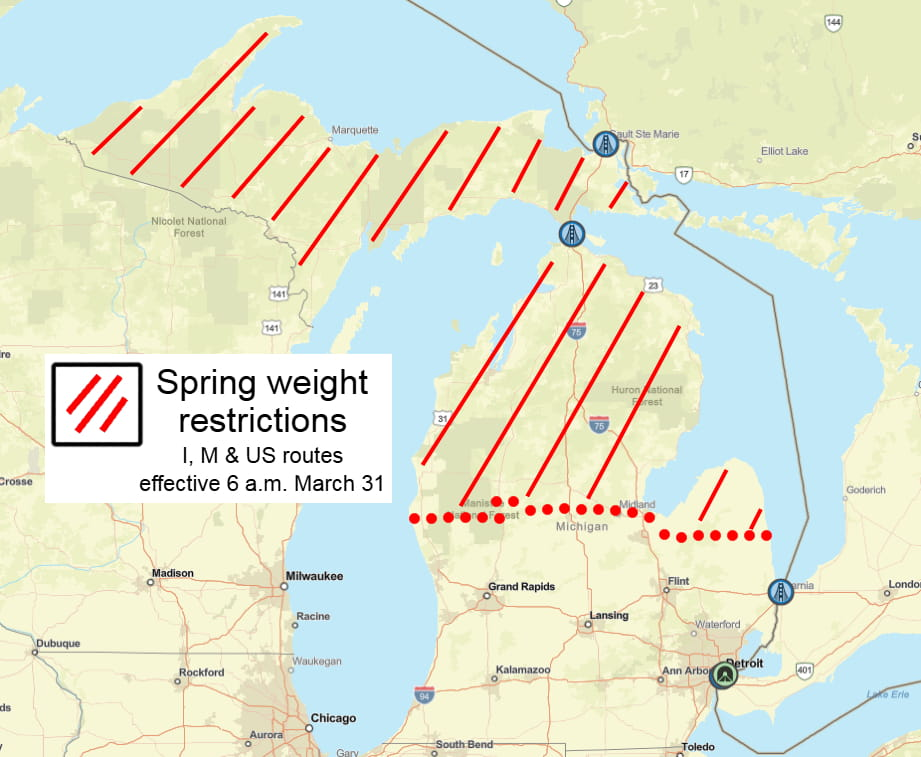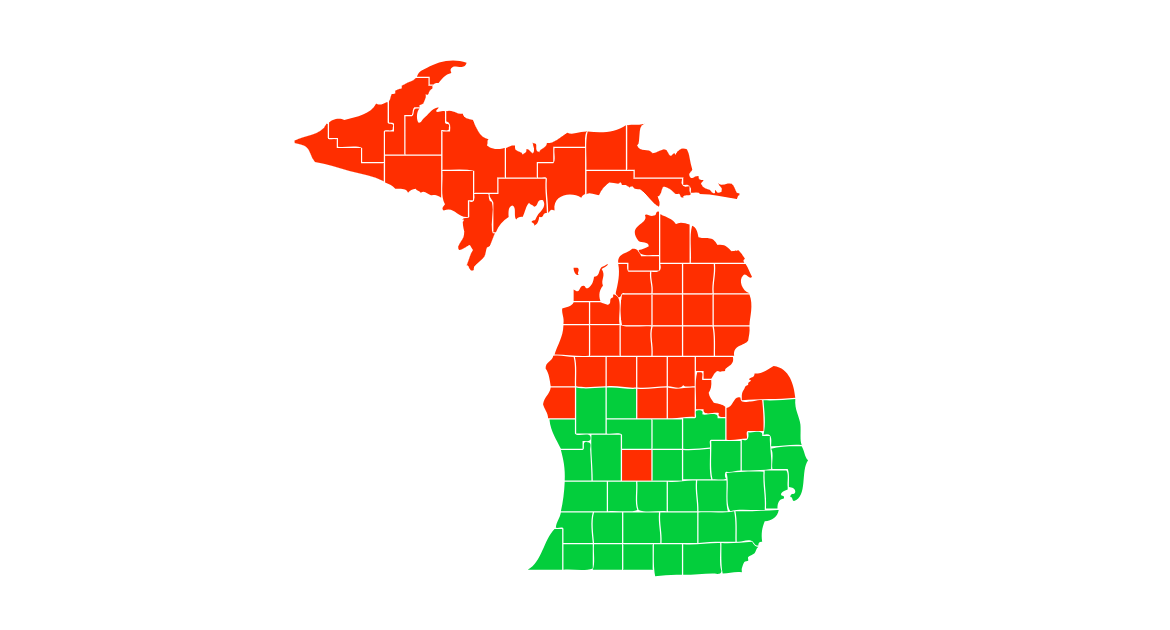As spring approaches, Michigan enforces frost law restrictions—also known as seasonal weight restrictions—to protect its roads from damage caused by heavy loads during the thawing season. While roads may seem durable, they become extremely fragile in late winter and early spring, when temperatures rise and the ground begins to thaw unevenly.
In this blog, we’ll explain why frost laws are enforced, when restrictions apply and how they affect allowable axle weights.
Why Does Michigan Enforce Frost Laws?
During the spring thaw, the ground underneath the pavement begins to thaw from the top down. This creates a trapped layer of water between the warming pavement and the still-frozen base underneath, making the roadbed soft and unstable. Even strong sunlight alone can accelerate thawing and destabilize the surface.
When heavy trucks travel over these weakened roads, they can cause serious damage, including cracks, potholes, and deep structural fatigue. That’s why Michigan applies seasonal axle weight limits to protect infrastructure during this vulnerable period.
When Are Michigan’s Spring Weight Restrictions in Effect (2025)?
Effective 6:00 a.m. Monday, March 31, 2025, weight restrictions will be lifted on all state trunkline highways from the southern Michigan border north to and including the following route beginning on M-20 at the US-31 intersection near New Era then east on M-20 to the US-131 Interchange in Mecosta County then North on US-131 to the south US-131BR/M-20 interchange in Big Rapids, then east on M-20 to the US-10 interchange in Midland County then east on US-10 continuing to M-25 to the M-15 intersection in Bay City, then south on M-15 to the M-46 intersection in Tuscola County then east on M-46 ending at the intersection of M-46 and M-25 in Port Sanilac.
Frost restrictions are still in effect for the remainder of the state and will be imposed and enforced on all state trunkline highways north of the routes listed.
Here is a detailed map showing the current restrictions in effect:

Michigan Axle limits during spring restrictions
Below is a simplified version of Michigan’s weight limits during seasonal weight restrictions based on spacing between axles:

Rigid roads are typically concrete-based and slightly more resistant during thaw but still require reduced loads.
Flexible roads (usually asphalt) are more prone to damage due to shifting and softening, hence the heavier weight reduction.
The following examples are shown as a guide for figuring the maximum allowable gross axle loads on all state trunk lines during all periods of the year. The maximum load on any wheel shall not exceed 700 lbs. per inch of tire width.

Steering Axle Weights – Can be the maximum of 18,000 lbs. (11,700 lbs. frost restrictions) if equipped with high pressure pneumatic or balloon tires (never to exceed 700 lbs. per inch of tire width).
Other Tandem Axles and Multi Axles – On any other combinations of vehicles exceeding a gross weight of 80,000 lbs., only one (1) tandem axle assembly shall be permitted at this weight (16,000 lbs. per axle). No other tandem axle assembly shall exceed 13,000 lbs. per axle.
Conclusion:
Frost laws in Michigan are essential to protect fragile roadways—but they can complicate your operations if you’re not prepared. By understanding the timelines, knowing your axle limits, and working with a knowledgeable permitting partner like Synchron Permits, you can keep your loads moving without surprises.





